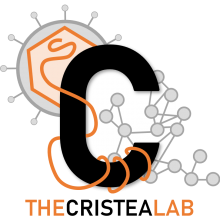The human cytomegalovirus protein pUL13 targets mitochondrial cristae architecture to increase cellular respiration during infection
Publication Year
2021
Type
Journal Article
Abstract
Viruses rely on organelle remodeling for their replication and for the spread of infection. Alterations to mitochondrial functions and cellular metabolism are hallmarks of nearly all viral infections. However, how the widely spread HCMV remodels mitochondrial structure and function has presented a conundrum. It remained unclear how HCMV increases mitochondrial bioenergetics despite triggering mitochondrial fragmentation. Using a multidisciplinary approach, we address this question. We establish that the uncharacterized viral protein, pUL13, targets the mitochondria, interacts with the MICOS complex, and is sufficient for increasing oxidative phosphorylation during infection. Our findings provide evidence that viral pathogens have acquired mechanisms for manipulating cristae architecture and ETC function to achieve increased energy production and can have broad implications in understanding virus-driven pathologies. Viruses modulate mitochondrial processes during infection to increase biosynthetic precursors and energy output, fueling virus replication. In a surprising fashion, although it triggers mitochondrial fragmentation, the prevalent pathogen human cytomegalovirus (HCMV) increases mitochondrial metabolism through a yet-unknown mechanism. Here, we integrate molecular virology, metabolic assays, quantitative proteomics, and superresolution confocal microscopy to define this mechanism. We establish that the previously uncharacterized viral protein pUL13 is required for productive HCMV replication, targets the mitochondria, and functions to increase oxidative phosphorylation during infection. We demonstrate that pUL13 forms temporally tuned interactions with the mitochondrial contact site and cristae organizing system (MICOS) complex, a critical regulator of cristae architecture and electron transport chain (ETC) function. Stimulated emission depletion superresolution microscopy shows that expression of pUL13 alters cristae architecture. Indeed, using live-cell Seahorse assays, we establish that pUL13 alone is sufficient to increase cellular respiration, not requiring the presence of other viral proteins. Our findings address the outstanding question of how HCMV targets mitochondria to increase bioenergetic output and expands the knowledge of the intricate connection between mitochondrial architecture and ETC function.
Journal
Proceedings of the National Academy of Sciences
Volume
118
Issue
32
Pages
e2101675118

